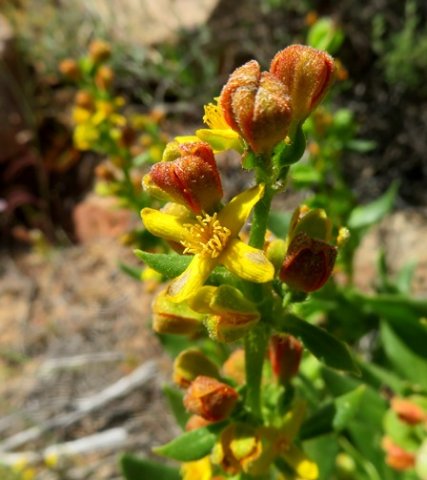Tetragonia

Tetragonia is an Aizoaceae genus of erect to prostrate annual and perennial herbs and shrublets. They are commonly known as sea coral or in Afrikaans as klappiesbrak.
Some grow from tubers and many have small surface papillae on leaves and some other parts. The leaves are alternate, variously shaped but often obovate or oblong, the blades fleshy.
The flowers mainly grow from leaf axils, solitary or in small clusters. Most species have bisexual flowers, while few bear male flowers at the top of the inflorescences. The perianths have from three to five, sometimes seven lobes, the tube mostly starting above the ovary. The insides of these lobes present the main floral colouring, yellow, cream, green or magenta.
There are few to many stamens, separate or in a fascicle. The inferior or semi-inferior ovary comprises one to nine locules, one ovule per locule and one style over each locule.
The fruit is a nut, variably shaped: cylindrical, ridged, winged, horned or spiny. The light brown seeds are solitary.
There are about 60 species in Africa, Asia, South America, Australia and New Zealand. About 40 of them occur in southern Africa, of which about 10 in the fynbos and 12 in the Little Karoo.
Some Tetragonia plants resemble certain Aizoon and Galenia species, but are usually distinguished by their young stems, succulent and red, as well as by the shapes of the soft fruit.
The plant in picture is Tetragonia hirsuta seen in the Biedouw Valley (Leistner, (Ed.), 2000; Vlok and Schutte-Vlok, 2015; Manning, 2007; iNaturalist).

